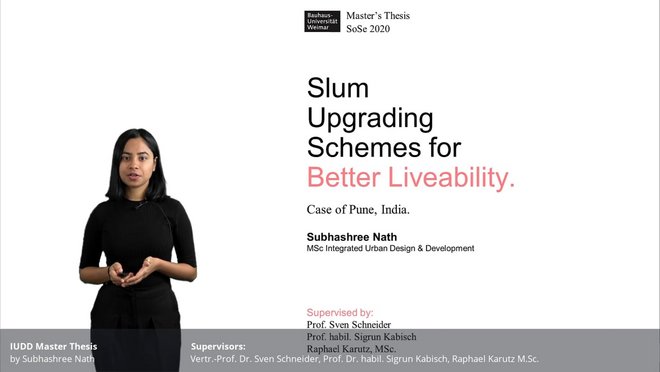
Slum Upgrading Schemes for Better Liveability
Master Thesis by Subhashree Nath
Study Programme Integrated Urban Development & Design
2020
In this Master Thesis Subhashree Nath investigates the suitability of livability indicators for slum upgrading concepts using Fuzzy Cognitive Mapping on interviews from inhabitants of different slum-upgrading projects.

Slum Upgrading Schemes for Better Liveability - Subhashree Nath (IUDD Master Thesis, 2020)
Click the Play button to load and view external content from Vimeo.com.
Automatically load and view external content from Vimeo.com (You can change this setting at any time via our »Data protection policy«.)
Liveability studies are mostly limited to formal settlements, whereas in emerging economies like India, a large proportion of the population lives in informal settlements. Lack of liveability studies for informal settlements often lead to the assumption that upgrading inevitably leads to an improved living experience. Consequently, slum upgrading schemes rarely consider improvement in liveability as one of the criteria.
The Master‘s Thesis,proposes a novel method to assess liveability perceptions of residents of slums which were upgraded under slum upgrading schemes and guide future upgrading schemes, on how to improve liveability. Based in the city of Pune, in India, the method developed includes interviewing residents from four neighbourhoods in Pune to elicit the causal relationships between different liveability indicators. The results are then analysed using Fuzzy Cognitive Maps to find the most influential liveability indicator in each neighbourhood which can act as a performance leverage for improving overall liveability.

